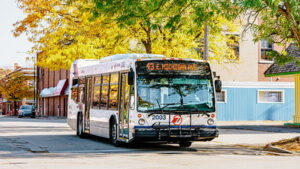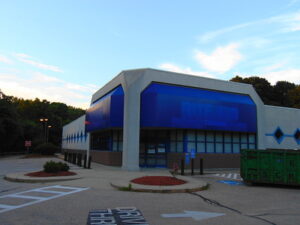With the news that WCC spent $4M of its HEERF money to repair the hole the Health and Fitness Center opened in the budget, I began to wonder what $4M would buy in higher education.
Closing the equity gap
It’s no secret that minority students graduate from college less often and less quickly than their white counterparts do. Minority college students also accumulate more educational debt along the way. Once in the workplace, they get hired less often, earn less money and receive fewer promotions. The disparities in educational outcomes and success markers between white and minority college students are clear. Closing this equity gap is essential for the health of our society and economy.
Delaware County Community College near Philadelphia serves students in Delaware and Chester Counties. DCCC has joined EAB’s Moon Shot for Equity initiative. It will spend $700,000 over the next five years to improve educational outcomes for its minority students. DCCC has also partnered with West Chester College to provide a clear path for DCCC minority students to transfer to West Chester. Currently, DCCC transfers about 400 students there annually. West Chester College will spend $3M over the next five years to remove barriers to academic success for minorties.
Dorms
Fulton-Montgomery Community College listed three dormitories on FMCC’s campus for sale for $1.8M last week. The sale will resolve a $11.5M USDA loan default that resulted when the pandemic forced their closure last year. FMCC bought two of the dorms and built a third to cash in on enrollment by international and out-of-district students. The pandemic combined with the Trump Administration’s policy of restricting international student visas illustrates the dangers of unmanaged financial risks. I’m not suggesting that WCC should buy dorms. In fact, I’d suggest the opposite. However, I’m always in favor of getting out from under a bad idea.
High school engineering program
Florida International University recently received a $4M National Science Foundation grant to expand a high school engineering program. FIU also partners with the University of Maryland, Arizona State University, Morgan State University and Virginia Tech to deliver the curriculum to more than 2,000 high school students in 12 states. While this isn’t a community college program per se, but it clearly demonstrates what $4M can do.
A new campus
Central Alabama Community College plans to spend about $13M to purchase a former church that sits on a 125-acre parcel of land in the community of Prattville, AL. Currently, CACC operates a temporary campus for 200 students at a local shopping mall. The expansion will create 40 new jobs and enable CACC to attract as many as 3,500 students to the new facility. CACC plans to offer vocational/technical training and health care instruction there. The new campus will have an estimated operating budget of $4M.
Prisoner rehabilitation
Cape Fear Community College in Cape Fear, NC received a $4M grant from the US Department of Labor to improve employment outcomes for prisoners who have completed their sentences. The grant, which spans 3 years, will fund educational readiness programs for 400 inmates in correctional institutions in two North Carolina counties. The grant also provides support services for former inmates following their release. CFCC already provides instruction to incarcerated students.
Rural healthcare
Lane Community College in Eugene, OR will partner with the South Lane Community Health Center to renovate an existing building on campus. The cost? $4M. Once finished, the building will provide rural health care in a clinic setting to residents in Cottage Grove, OR. The clinic will provide services to anyone, and will offer primary care services, prenatal and maternity services, dental services and mental health care.
As you can see, $4M can buy a lot when used properly. But $4M can’t really generate any opportunities for a community when the Administration uses it to cover financial losses that occur as a direct result of poor decision-making and a shocking lack of oversight.
It’s unfortunate that the WCC Trustees are so fully engaged in making sure the President is comfortable that they cannot focus on student and community needs.
Photo Credit: Ileana Gonzales , via Flickr































